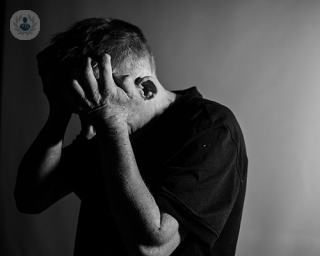Self-harm
Dr Alan Ogilvie - Psychiatry
Created on: 04-05-2018
Updated on: 09-27-2023
Edited by: Kate Forristal
What is self-harm?
Self-harm, or self-injury, is when a person intentionally damages their body as a way to cope with or to express their overwhelming emotional distress. The most common form of self-harm is cutting one’s skin with a sharp object like a knife or razor blade.
Self-harm can be symptomatic of a number of mental health disorders. While it is often done without suicidal intentions, it can be a precursor to taking one’s own life, as over half the people who commit suicide have a history of self-harm.
Self-harm is a serious problem. Although it can provide what feels like an outlet or temporary relief, such relief is short-lived and it can soon become an addictive habit. It can severely damage the individual’s body and making open wounds on yourself runs the risk of infection. Keeping the secret can cause further feelings of isolation, which only make the problem worse.
It is important to seek help from a psychiatrist if you feel the need to self-harm.

Why do people self-harm?
Cutting and self-harm can be a way for a person suffering from intense emotional distress to deal with their problem. Individuals who self-harm may feel that it releases some of their emotional pain, express feelings they cannot speak about or put into words, or even simply to distract them from their lives. More often than not, the intention is for a person to punish themselves, or to express their distress. It is a cry for help.
Self-harm often goes hand-in-hand with of a number of mental health problems:
- Borderline personality disorder
- Depression
- Anxiety
- Schizophrenia
- PTSD (post-traumatic stress disorder)
- Substance abuse
- Eating disorders
People with a history of trauma or abuse (including physical, emotional, and sexual) may also turn to self-harm as a coping mechanism.
How common is self-harm?
It is difficult to be sure how many individuals self-harm, as many keep it secret. There are thought to be millions of cases worldwide every year. It is most common in teenagers and young adults, and seems to be more common in girls than boys. According to the Royal College of Psychiatrists, 1 in 10 young people will self-harm at some point.
Types of self-harm
- Cutting or burning the skin – this is the most common form of self-harm.
- Hitting oneself
- Ingesting too many tablets or toxic substances to poison oneself
- Alcohol and/or drug abuse
- Anorexia (starving oneself) and bulimia (binge-eating and then purging)
Getting help
Anyone who experiences the urge to self-harm should seek help, particularly if they have acted on these urges.
Confiding in someone is often the first step. Opening up and talking about what you are experiencing to someone you trust and sharing what you are going through can be a huge relief. Organisations like the Samaritans and Mind exist so that even if you don't want to talk to someone you know, you can talk and share with someone who will listen and wants to help you.
A visit to your GP is also highly advised. They may be able to refer you to a specialist who can help you deal with your feelings (usually a psychiatrist or psychologist), and assess any damage to the body, treating where necessary.
If self-harm leads to severe injury or an overdose, it is essential to seek medical attention immediately.














